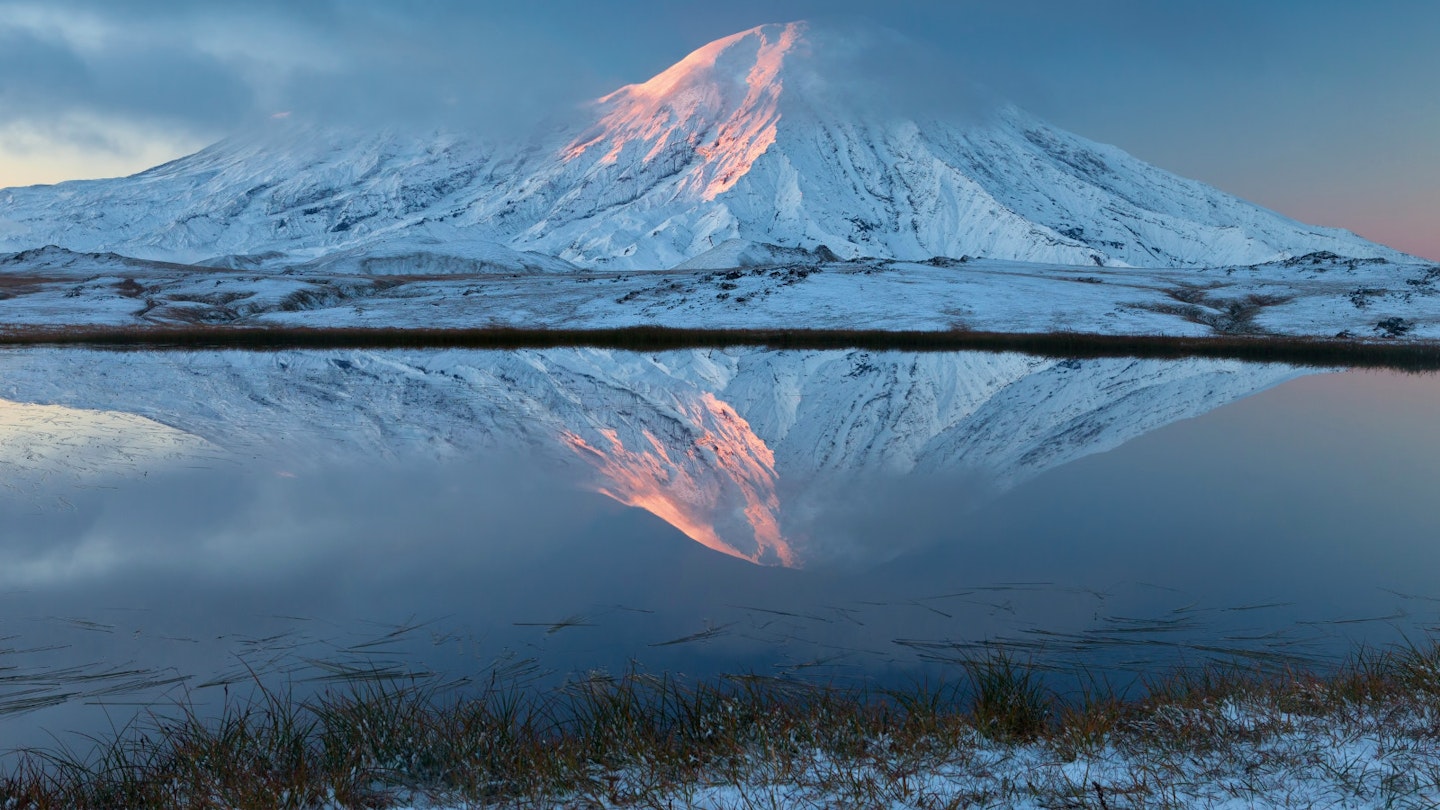Discover the Pristine Beauty of Kamchatka
The largest active volcano in the northern hemisphere and brown bears scooping up salmon define Russia’s barely touched Kamchatka Peninsula. This sub-Arctic, 1250 km-long expanse in the Russian Far East stands out as one of the top destinations for pristine habitats and abundant wildlife, despite being covered in snow and ice for most of the year.
Wildlife and Volcanoes
One way to measure the incredible biological diversity of this region is by counting the plant species found here. Kamchatka is home to over 1,000 plant species—indicating a rich array of wildlife. The area, little disturbed and scarcely explored, boasts more than 15,000 brown bears, 10,000 snow sheep, 1,500 reindeer, wolves, foxes, wolverines, and sables, along with half of the world’s population of massive Steller’s sea eagles. Coastal areas shelter nine whale species, huge seabird colonies, and thousands of sea otters.
However, only a few thousand tourists visit this remote region annually. Scarcely 400,000 people inhabit the entire 472,000-sq-km peninsula, with half residing in Petropavlovsk-Kamchatsky, the only major city and base camp for expeditions in Kamchatka. Visitors are drawn here for two main reasons: to witness the world’s most impressive collection of volcanic features, including the largest active volcano in the northern hemisphere, and to observe the abundant and remarkably peaceful brown bears feasting on millions of salmon.

Fortunately, you can experience both wildlife and volcanic wonders at the Kronotsky Reserve, located 200 km northeast of Petropavlovsk. This reserve is one of seven protected areas listed by UNESCO as the Volcanoes of Kamchatka Nature Park. You can explore the famous Valley of the Geysers or the 10 km-diameter Uzon Caldera, or visit the South Kamchatka Sanctuary in August to witness the largest salmon run in the world along with hundreds of bears at Kuril Lake.
Organized Tours
Visiting Kamchatka independently has become easier than before; however, limited infrastructure, permit requirements, and potential risks such as bear encounters and avalanches make organized tours essential for many locations. Many of Kamchatka’s famous sights—including the Valley of the Geysers and Kuril Lake—can only be accessed via organized tours, which typically involve chartered helicopter rides. Despite this, going on a tour doesn’t mean joining a large group—some tours are private for just two to four people, with most groups accommodating fewer than 20.

Tours vary from simple day trips to extensive one- or two-week expeditions that encompass many sights and activities. To secure a spot, especially during July and August, planning ahead is crucial—otherwise, valuable days may be wasted on scrambling for guides or transport from Petropavlovsk. Comprehensive tours generally include everything: guides, transport, permits, accommodation (hotels or tents), and meals. Many high-profile tours include helicopter rides or 4WD transport. Petropavlovsk offers numerous tour companies; highly recommended agencies include Explore Kamchatka, Kamchatintour, and Lost World.
Prices for major day trips—such as those to the Valley of the Geysers, Kuril Lake, and Mt Mutnovskaya—are set by helicopter companies, remaining consistent across travel agencies (as agencies coordinate clients for these tours). A day trip to the Valley of the Geysers costs approximately 37,000 roubles per person, which includes a one-hour helicopter ride each way, lunch, and stops at Uzon Caldera and Zhupanova River. Longer tours can vary significantly in price, with a week-long trip that involves some camping and visits to key sights costing between €2500 and €3500, including several helicopter rides.

Independent Travel
Exploring Kamchatka independently is more challenging and involves considerable risks—especially if you venture into the backcountry, where a single misstep can have serious consequences. Winter travel eliminates bear attack risks but introduces new dangers, like extended white-outs. Keep in mind that Kamchatka, as a border area and militarized zone, necessitates various permits; therefore, always check current regulations before traveling beyond Petropavlovsk-Kamchatsky and Yelizovo.
For those ready to embrace independent travel, uncomplicated DIY trips near Petropavlovsk include hiking Mt Avachinskaya (one of Kamchatka’s “easier” volcanoes, taking about four to six hours to summit) and trekking along well-marked trails from Mt Avachinskaya to Nalychevo Valley (approximately two days, with camping in designated zones or huts). An alternative route is to travel up to Esso, located 10 hours north of Petropavlovsk by bus. Bystrinsky Nature Park in this area features a vast network of well-marked and well-mapped trails. For a more adventurous experience, consider hiring a local guide for a week-long trek into Kamchatka’s extensive wilderness areas. The visitors center or the Volcanoes of Kamchatka Park Office in Yelizovo can assist in finding a freelance guide.





